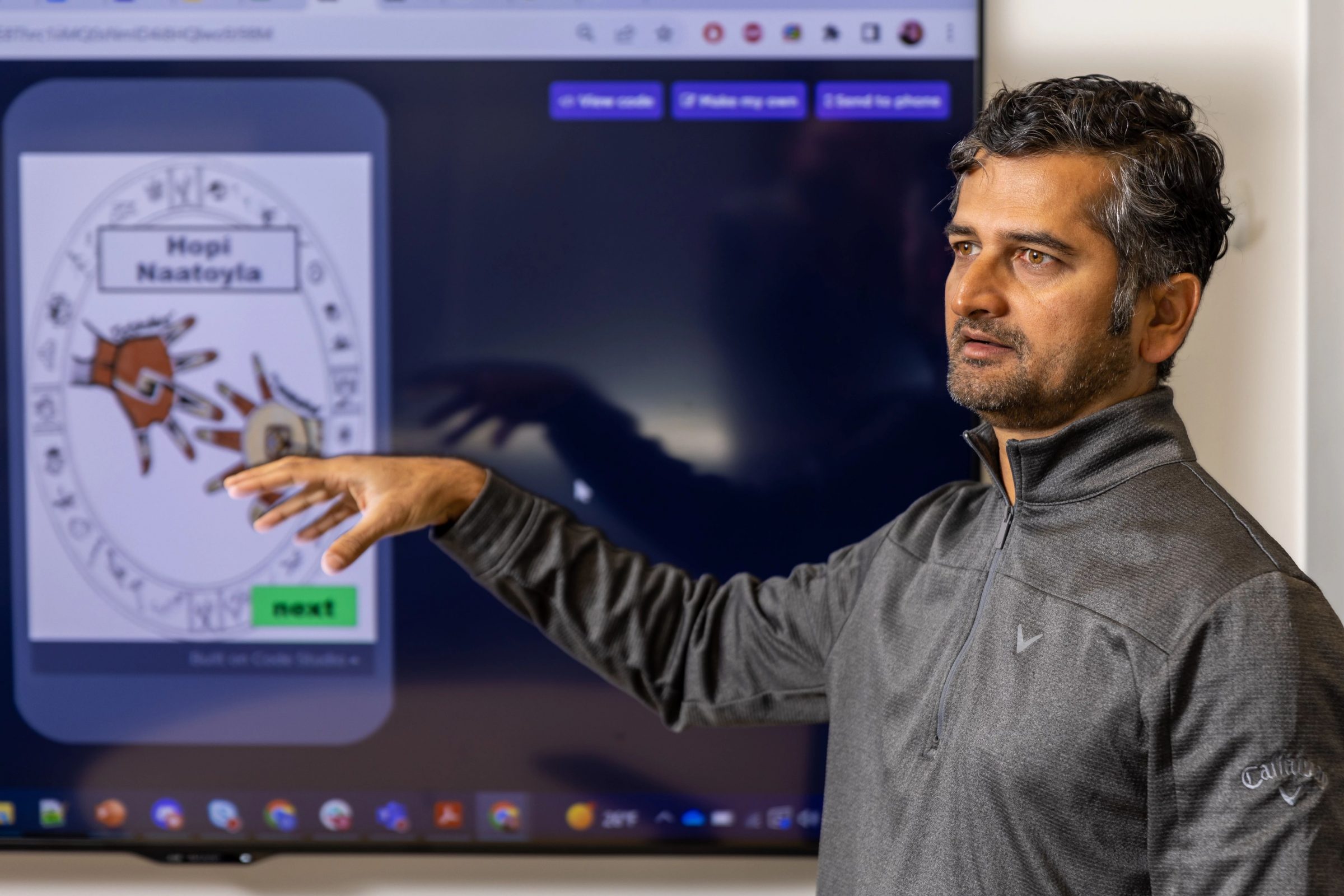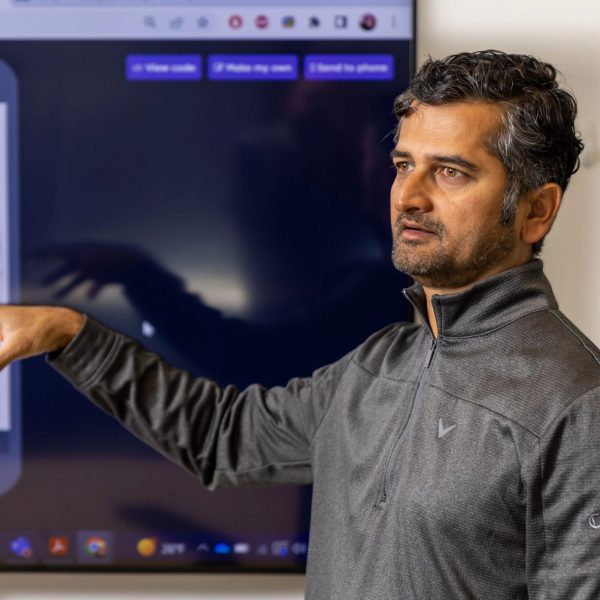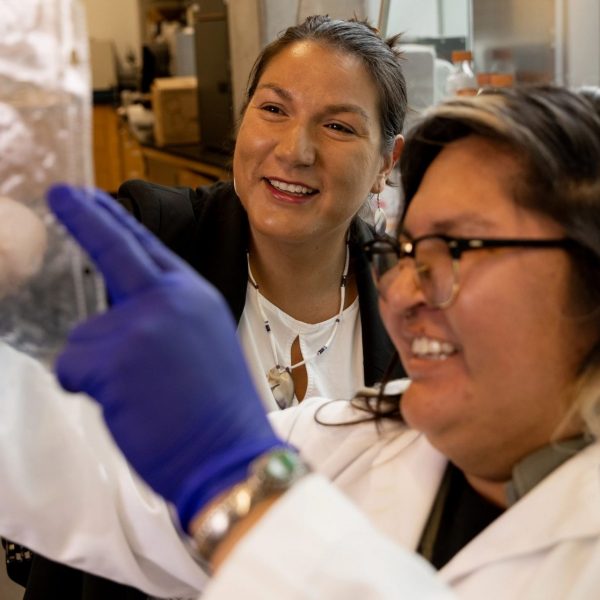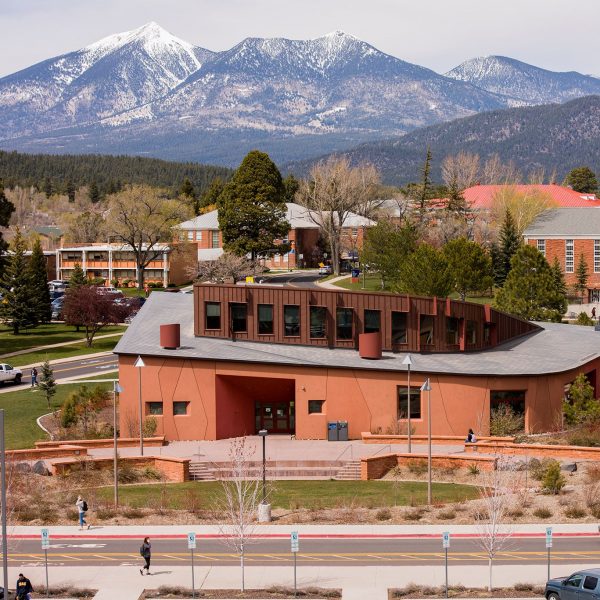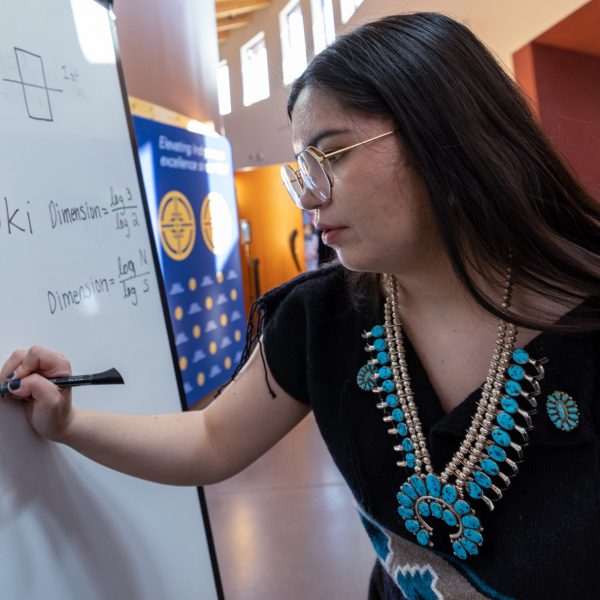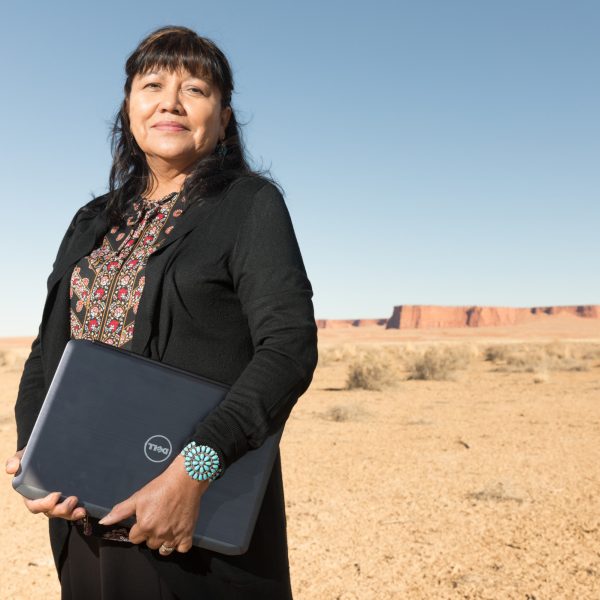Associate Professor Ashish Amresh wants to empower Native American educators to teach the language of code.
Teaching computer science in Arizona’s rural and tribal communities often represents a major challenge. Educators at schools in these areas, who are not well versed in computer science, might teach only the most basic skills—or not teach computer science at all.
For Associate Professor Ashish Amresh, helping these teachers overcome their reluctance to introducing computer science skills in the classroom is a passion—and he sees a critical need for more research in this area. The National Science Foundation (NSF) awarded Amresh a $349,600 grant for a project that seeks to address these challenges. The NSF’s Building Capacity in STEM Education Research (BCSER) program supports projects that carry out high-quality STEM education research.
Amresh’s project, “Investigating the Approaches for Improving Computer Science Pathways at Native American Tribal Schools,” will create a research protocol designed to work with eight Native American high school teachers in northern Arizona. By following a participatory design approach, Amresh and his team will investigate new methods and curricula for introducing computer science concepts in tribal high school classrooms.
We need all teachers to be able to speak the language of code.
“Our biggest challenge is changing the teachers’ mindsets toward computer science,” he says. “While there is a lot of excitement and interest among the academic community for improving attitudes and creating positive impact in this area, there hasn’t been much progress to date. Although the educational landscape is slowly shifting and changing, the bottom line is that we need all teachers to be able to speak the language of code.”
Some educators have expressed hesitation about whether the benefits of teaching computer science outweigh the costs, such as the amount of effort required to create and facilitate computer science curricula, as well as the ongoing need to keep those skills and curricula up to date. Other challenges include the availability of resources, such as computers and wi-fi, and getting buy-in and support from school administrators.
“We want to take a new approach by empowering teachers to embrace computer science and not be frightened by it,” says Amresh. “We will show them ways to make computer science lessons meaningful in their classrooms and tailor the lessons to their students using a variety of methodologies.”
This is a fantastic opportunity for NAU students to be part of a project that can greatly benefit underserved and underrepresented communities.
Building a cohort of NAU coding mentors
A key component of the project will be building a cohort of four Native American graduate and undergraduate students from NAU who will serve as mentors to the eight teachers. “Our plan is to recruit students from all majors, although we’ll give priority to students with computer science backgrounds as well as knowledge of and/or experience with Native American culture,” Amresh says. He will work closely with NAU’s Native American Cultural Center to recruit the mentors.
“We plan to have each mentor serve two teachers,” Amresh explains. “The student mentors will assist the teachers by building lesson plans, implementing lessons in the classroom, and troubleshooting. They will also make visits to the schools to check progress and provide support. This is a fantastic opportunity for NAU students to be part of a project that can greatly benefit underserved and underrepresented communities. It will help build communication, teaching, mentoring, and teaming skills for the students that will be highly valuable when they graduate.”
Computer science curricula for tribal communities
Amresh and his team will recruit teachers from schools serving student populations that are at least 30 percent Native American. “We will focus on schools that are on Native American tribal lands and try to recruit teachers who are interested in bringing computer science to their schools,” he says. “Schools that have had no exposure to computer science will also be given priority.”
The participating teachers will form a community of practice. Through a closed web-based platform, they will be able to actively engage and discuss lessons, issues, and strategies, with regular feedback from the mentors. The project team will regularly evaluate the findings and refine the curriculum to best suit the needs of the tribal high school students.
Amresh will consult with his colleagues in NAU’s School of Informatics, Computing, and Cyber Systems and College of Education. He will also work closely with consultant Shawn Jordan at Arizona State University for guidance on the design-based research aspects of the project, tailoring the curriculum to work in tribal settings.
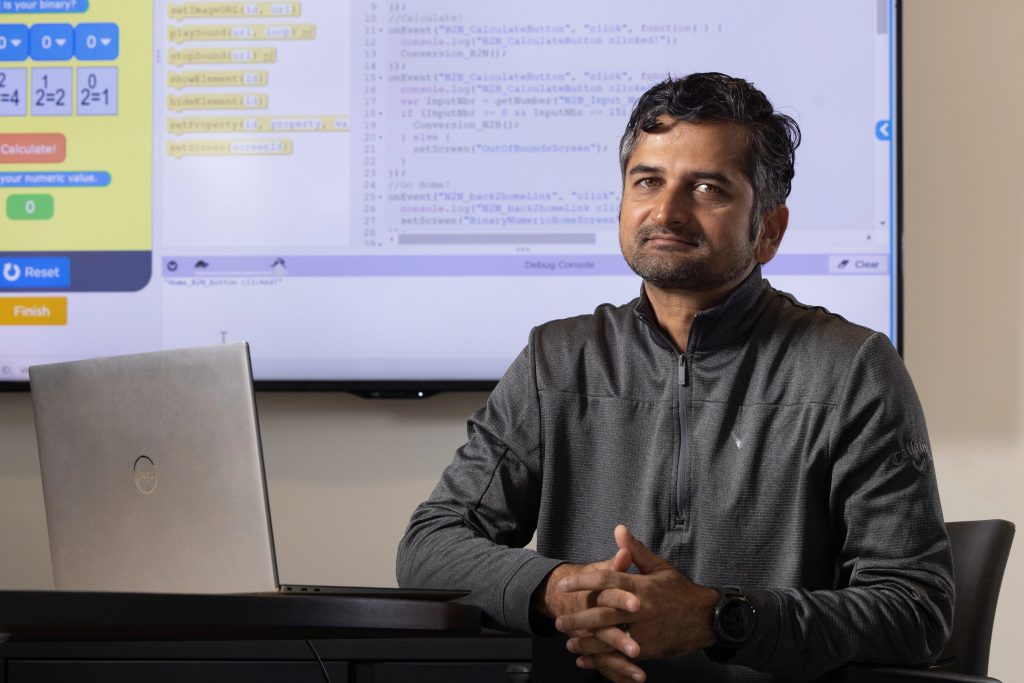
Amresh’s ultimate objective is to develop a well-designed curriculum that is flexible enough to work in diverse settings, broadening computer science participation in tribal school districts. “Building a thriving community of rural and tribal computer science teachers that share and grow this participation would be another success story,” he adds. “Seeing students increase their interest in computer science and opting for computer science majors when they graduate from high school would be highly rewarding.”
As principal investigator of the project, Amresh is responsible for all the research, development, deployment, and professional training. He will be developing the instructional prototypes, deploying them at the participating high schools, collecting data, and performing analyses that inform the research outcomes.
Amresh joined NAU in 2022, and brings more than 15 years of experience developing undergraduate programs in game design at other institutions, including Arizona State University and Embry-Riddle Aeronautical University. He has also established several K–12 summer programs focused on technology and gaming. He believes his move to NAU will bring him closer to his target audience, opening his work to new resources and improved support.
“Moving to Flagstaff will provide me with access to many of the schools and communities in northern Arizona that are ideally suited for this project,” says Amresh. “NAU’s commitment and allocation of resources to help accelerate such research will also be of great benefit to our success.”

